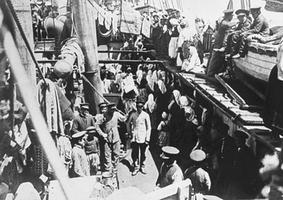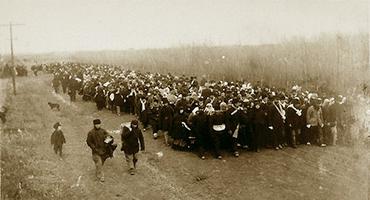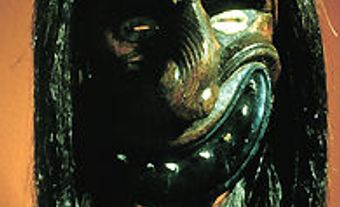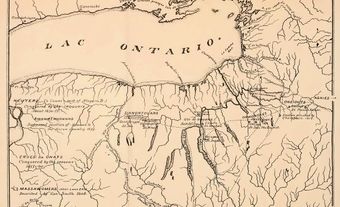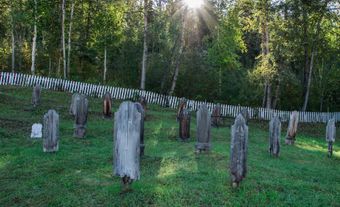Origins and migration
Since they arose as a peasant group in southern Russia with orally transmitted teachings and traditions, their origin is obscure. Their doctrines appear to have been at least partially derived from those of a 17th-century renegade preacher Danilo Filipov, who dissented radically from the Orthodox Church.
The Doukhobors rejected church liturgy, believing that god dwells in each human being and not in a church; they rejected secular governments; and practised pacifism. They replaced the Bible with orally transmitted psalms and hymns, which they called the Living Book. These are sung to this day at the molenie (religious gatherings). Group decisions are made collectively at sobranie (community meetings). Doukhobors do not use any religious symbols at these meetings except for the display of bread, salt and water, which represent the elements that sustain life. Some Doukhobors revere their chosen leaders, whom they regard as especially inspired by God, but Doukhobors generally believe that all people are equal because all have God within them. Many of them still live by the slogan coined by one of their leaders, "toil and peaceful life." Most Doukhobors no longer live communally, but many are still vegetarians and all practise pacifism.
During the late 18th century, the group was persecuted by the tsars and the Russian Orthodox Church for heresy and pacifism. In 1785, an Orthodox archbishop called them Doukhobors, or "Spirit-Wrestlers." It was intended to mean "Wrestlers against the Holy Spirit," but the group adopted it, interpreting it as "Wrestlers for and with the Spirit."
Under Tsar Alexander I persecution lapsed, and in 1802 the Doukhobors were gathered in settlements in the Crimea, which was then a frontier region. Forty years later, under the less sympathetic Nicholas I, they were resettled among the fierce tribesmen of the recently conquered Caucasus. There they overcame initial difficulties and eventually prospered, particularly under their female leader, Lukeriia Kalmikova.
Kalmikova died in 1886, and the ensuing struggle for leadership split the sect. Her adopted son Peter Verigin, later called Peter Gospodii (the Lordly), emerged as the majority leader, but he was immediately arrested by the authorities and sent into exile in Siberia. From afar, Verigin was able to exhort his followers to reaffirm their ideals and become even more radical, as the Doukhobors added vegetarianism, communal living and abstinence from alcohol to their other practices. In 1895, they publicly burned their weapons in what is now known as The Burning of Arms, which may have been the first pacifist protest in modern times.
Arrival in Canada
Persecuted again, many of the Doukhobors were allowed to emigrate to Canada, assisted by novelist Leo Tolstoy and his followers in addition to British and American Quakers and Russian anarchists. More than 7,500 sailed to Canada in 1899 and settled in what was to become Saskatchewan, where they lived as a community. With 500 more Doukhobors, Verigin was allowed to join them there in 1902, making the migration of the Doukhobors the largest single mass migration in Canadian history.
Initially, Doukhobors were permitted to register for individual homesteads but not to live communally. They received concessions regarding education and military service. Frank Oliver, who succeeded Clifford Sifton as minister of the interior in 1905, interpreted the Dominion Lands Act more strictly. When Doukhobors refused to swear an oath of allegiance — a condition for the final granting of homestead titles — their homestead entries were cancelled.
In 1908, Verigin led most of his followers to southern British Columbia, where he bought land and established a self-contained community of 6,000 members. Some Doukhobors split off to establish their own farms and became independents.
Radical protests and government intervention
A tiny, radical splinter, called Sons of Freedom, rejected any control by Canadian authorities and saw themselves as "ringing bells" destined to remind other Doukhobors to adhere to traditional values. To show their freedom from material possessions, from the 1920s onward they marched, burned their own homes, the homes of other Doukhobors and torched public buildings, rail lines and schools in disputes with the government of British Columbia over education and other issues. Many in this group were later imprisoned for nude protest parades and had their children taken from them. Mainly because of their opposition to military service, the War-time Elections Act disenfranchised several religious groups including Doukhobors and Mennonites. The Doukhobors were disenfranchised in 1917, and again in 1934–55, partly because of their faith and adherence to pacifism which prevented them from bearing arms.
During the 1930s, the effects of the Depression, internal disenchantment and mismanagement, combined with the incendiarism of fanatics and the unsympathetic policies of finance companies and government, ruined their communal living system. It had been one of the largest and most complex undertakings in communal living in North American history. In 1939, foreclosure took place and the land passed to the BC government. Members of the community group of Doukhobors bought it back in the 1960s under the leadership of John J. Verigin, a great-nephew of Peter the Lordly.
New Denver Survivors
After much Sons of Freedom unrest during the 1950s and 1960s, which included nude protests, parades and in some cases bombings of buildings, the children of protestors were captured by the RCMP and schooled in a compound, a former tuberculosis sanatorium, in New Denver, BC. Some were held there for up to six years, but eventually the mothers of these children agreed to send their children to public schools, and the children were released. By the 1980s, fanatical activism had died down.
However, 100 of the nearly 200 children sent to the compound — calling themselves the New Denver Survivors — launched a class action lawsuit in the 1990s over alleged physical, psychological and sexual abuses they endured at the school. They sought an apology and compensation from the government of British Columbia. None of the lawsuits succeeded, but a 1999 BC Ombudsman report called for an unconditional, clear and public apology to the victims. In 2004, the BC government issued a statement of regret instead. Some survivors were angry and appealed to the BC Human Rights Tribunal in 2012. However, in 2013, tribunal member Enid Marion stated that she could not conclude "that the survivors’ race, ancestry or religion was a factor in the Ministry’s refusal to implement any of the report’s recommendations."
Cultural rediscovery
In the 1970s and 1980s, many Doukhobors returned to the Kootenay region and rediscovered their heritage. They formed Doukhobor choirs, Russian language programs, peace groups and other organizations that sought to instill Doukhobor values and practices in the next generation. They and independent Doukhobors started molennie and Doukhobor choirs in other regions of Canada. Others travelled to Russia to meet with and help Russian Doukhobors who had chosen not to migrate in the 19th century. Doukhobor artists, historians, journalists and writers began to create works that expressed their heritage and values while coming to terms with the modern world.
Today, many members of the various Doukhobor groupings still struggle to forestall the effects of encroaching assimilation and declining membership. Descendants of the original Doukhobor settlers number approximately 30,000 across Canada, but about one third of that number remains active in the culture, maintaining their spiritual practices, Russian language and pacifism to varying degrees. Most of these Doukhobors live in the Kootenay region of British Columbia, with smaller groups residing in other areas of BC, Saskatchewan and Alberta. Since 2008, the largest group, known as the Community Doukhobors, or Union of Spiritual Communities of Christ (USCC), led by John J. Verigin Jr., has maintained a strong presence in the interior of British Columbia, while Sons of Freedom Doukhobors live in or near Krestova, BC. Other members of Doukhobor groups or independent Doukhobors live throughout western Canada.

 Share on Facebook
Share on Facebook Share on X
Share on X Share by Email
Share by Email Share on Google Classroom
Share on Google Classroom
